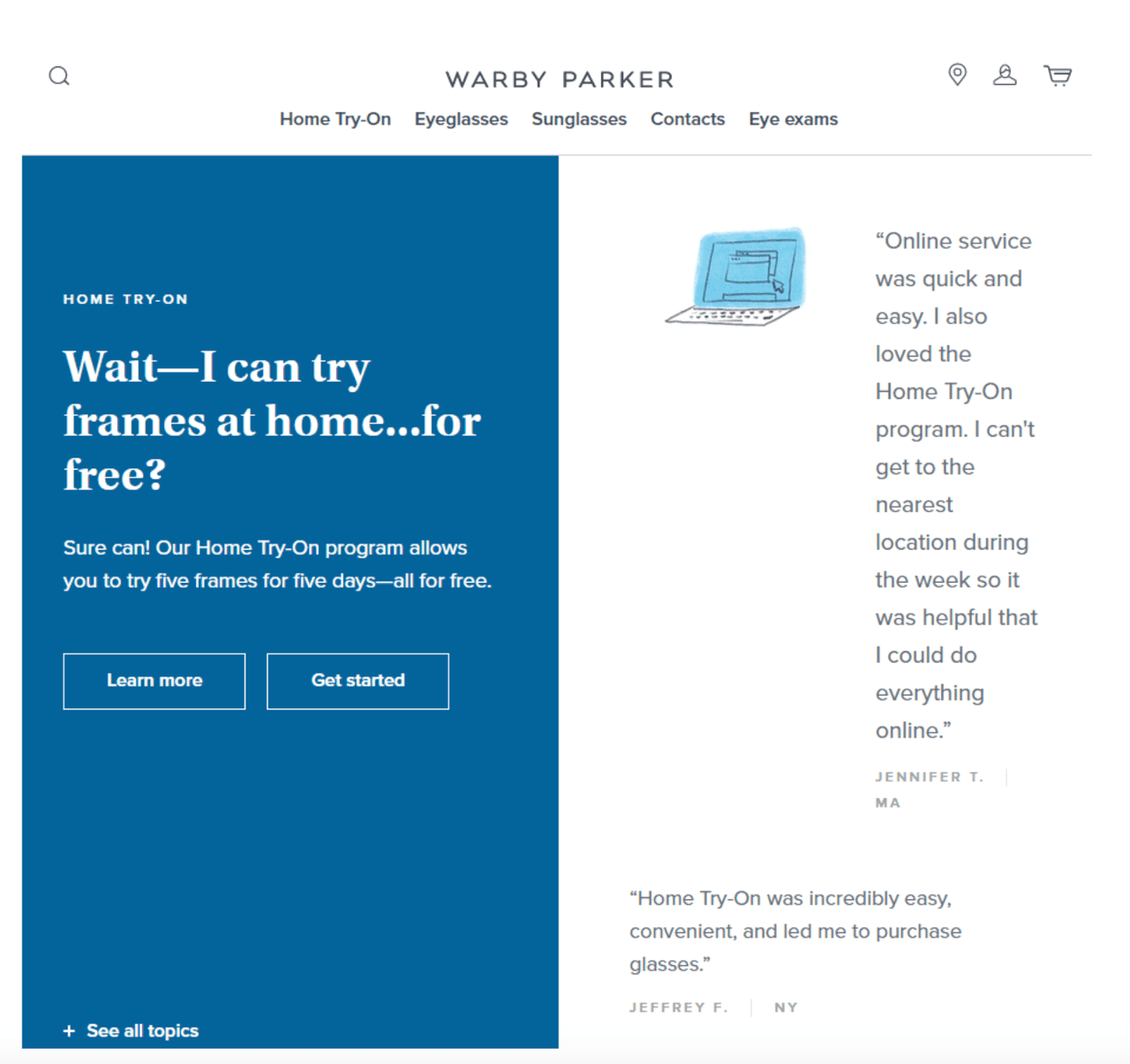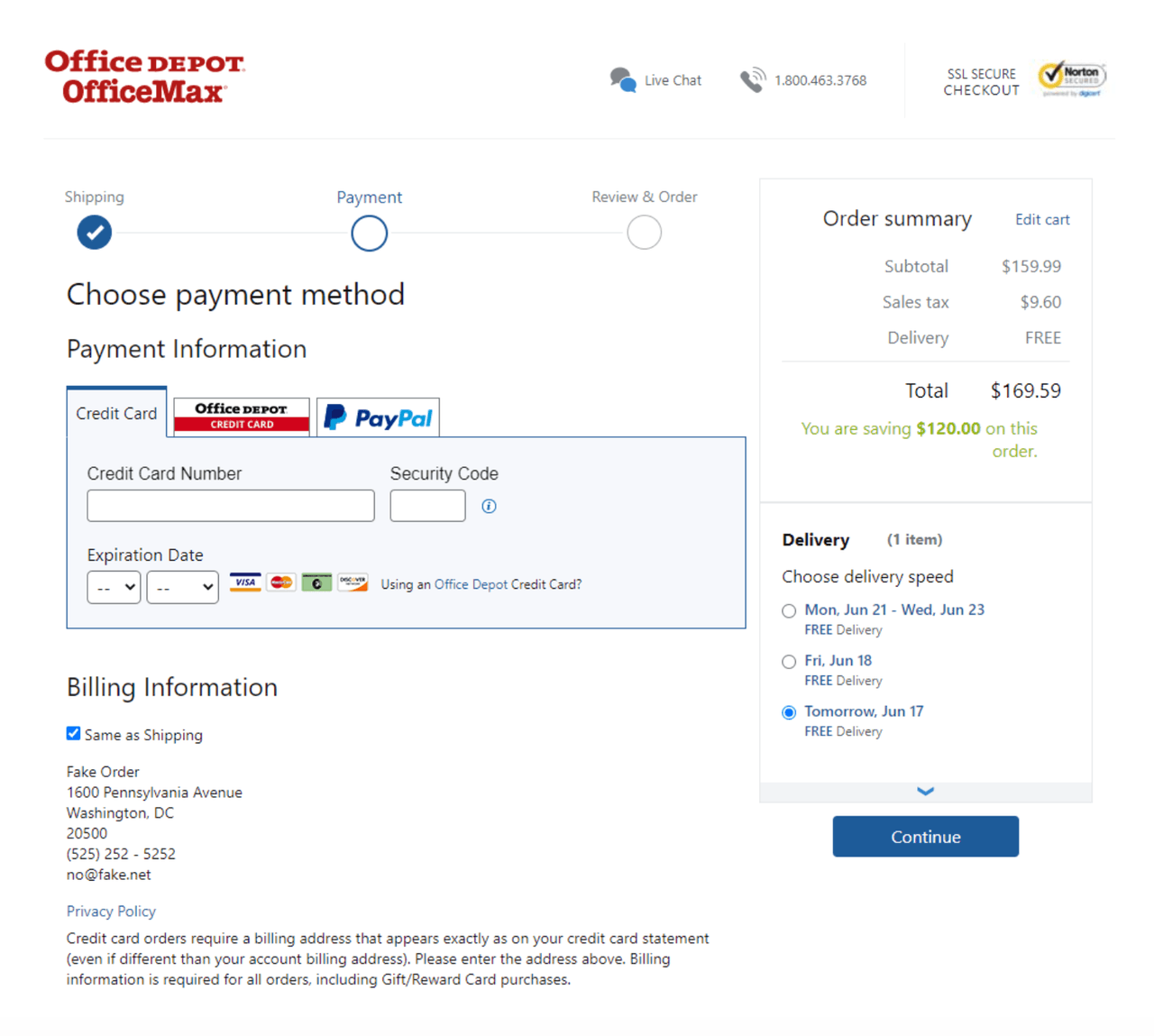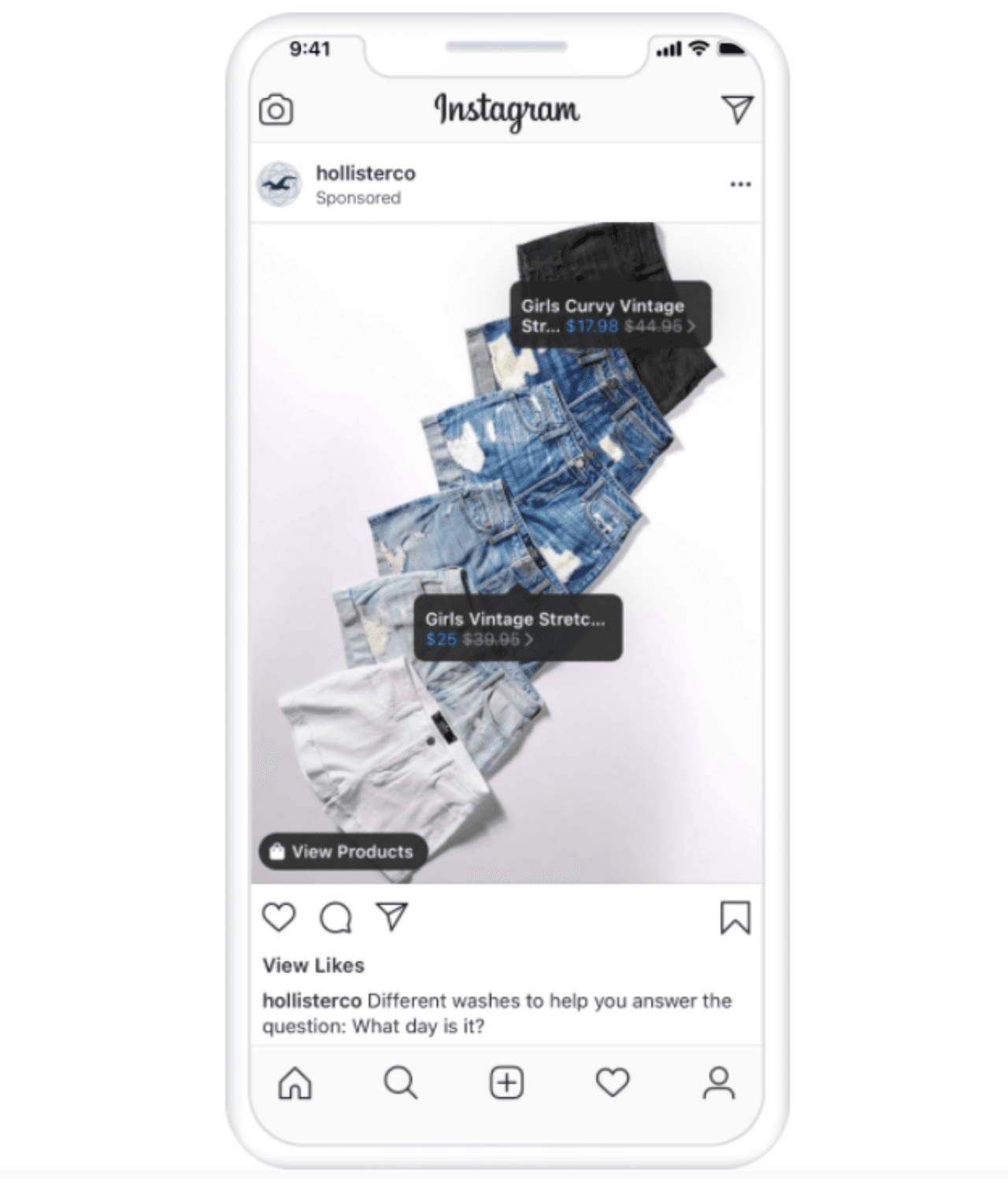When Sales Drop Low: 9 Steps to Boost Sales In Ecommerce
Guest Author
While eCommerce companies often focus on how to boost sales, there needs to be an equal amount of time dedicated to addressing business when sales performance declines.
They’re opposite sides of the same coin and each situation needs attention and preparation.
That’s why we’re going to look at what to do when those sales drop, and how you can quickly respond.
Here’s what we’ll cover:
- Metrics That Can Identify a Sales Drop
- Reviewing Site Basics
- Ensuring Customer Testimonials Are Relevant
- Improving the Cart and Checkout Process
- Adding Kits and Product Combinations
- Reviewing Your Pricing
- Testing Discounts Across Your Channels
- Adding Live Customer Support
- Enhancing Shipping Options
- Returning to Your Inventory Strategy
The starting point should always be to check on your overall site and sales data.
You should track everything from traffic and special offers to how many new customers you have or need. Metrics and KPIs drive your success, so let’s jump into which are the most useful to understand sales declines.
Using Sales Metrics to Know When Sales Have Dropped
When you want to understand if your sales are declining or how to boost sales on your site, start with standard eCommerce metrics.
These will help your sales team understand where you might be having concerns, at what point in the sales funnel people are leaving, and where messaging could be adjusted.
Remember that changes will need to happen across your website, marketing, social media profiles, and other locations to help you reach existing customers and new leads.
- Monthly sales growth tracking is the place to start to discover when sales have dropped. Your eCommerce and order tools should track purchases across each product or SKU. Monthly sales tracking can help you determine if the sales dip is new, a worrying trend, or part of your normal annual fluctuations.
- Funnel conversion rate that monitors how much of your audience moves through each stage in the buyer’s journey. This can show you if you have too few people buying from you or if you’re not getting enough traffic into the top of the funnel.
- Customer lifetime value (CLV) shows how much your average customer spends with you over the course of your relationship. You can see trends here and know that a dangerous sales drop is occurring when CLV is declining. Higher CLV customers tend to buy from a store more often, so personalizing the experience to them is one way to how to boost sales.
- Web traffic and ad impressions will help you understand if you’re getting in front of enough people or not. When these decline, it can point to marketing tactics that don’t work or issues with your SEO and not targeting how people speak about your product category.
- Cart abandonment rates can point to end-funnel issues where customers find you, are engaged, but then bail. This will point you to issues in the checkout process, such as surprise fees or having shipping costs that are too high. Addressing things here is one way how to boost sales quickly.
- Customer acquisition cost (CAC) is another important metric. You may be spending the wrong place so that it takes more to find the right customer. CAC issues may also show that you need to adjust prices so that you’re making enough money on converted leads to stay in business.
- Retention rate is another important metric to track. How much of your monthly sales come from new or existing customers? Low retention means you’ll need to spend a lot to repeatedly gain customers, raising that CAC. Look for root causes, such as a poor customer experience, to see where you can improve. Don’t forget to look at social media profiles to see what happy and upset customers are saying.
Those seven metrics will help you get started with addressing a sales slump by showing you where problems live. Now, let’s look at nine steps to try to boost your sales by addressing concerns in your store, how you offer products and the back-end processes that can harm the consumer experience.
9 Steps on How to Boost Sales In Ecommerce
1. Review the Basics to Increase Sales
Whether you sell on your website, rely on email marketing, or have your biggest presence on Amazon, there are core small business basics to review. Later steps will address your marketing strategy, such as content marketing or asking for referrals. Where you want to start are the eCommerce fundamentals. Why? Because it can be hard to determine what is causing the sales drop and thus how to boost sales with the proper response.
Visit your website like a customer would for the first time. Do you have high-quality photos for every product? Is something grainy or not displaying? Are the descriptions for products accurate and do they make you want to buy something new? Do your product categories make sense?
Navigate around your website and see if everything is easy. Check that your search tools pull up the right items, especially your moneymakers. Verify that your shopping cart and the checkout process work correctly. Look for places where the process is too complicated or confusing. If everything seems fine, then you may need to adjust your marketing strategy and messaging to reach the right customer base, make the best offers, and offer upsell options that people want.
You likely know the common complaints about your products, even if they’re not your fault. Address them as directly as possible. For instance, on your t-shirt sales pages, add a sales chart and note that customers may need to order a size up or down from their normal size to get the best fit.
2. Focus Customer Testimonials on Categories and Relevance
Your customers come from a variety of channels every day. Sometimes, people will return the following day from a different channel thanks to a retargeting campaign. You likely know that reviews and customer testimonials are proven to be something customers read and make people more likely to buy. Beyond just having reviews, you want to curate them to address all the channels your customers use so that reviews feel relevant.
Fashion and apparel reviews should show and tell the audience about the style and quality of your goods. If you offer a service to help people pick a product, curate reviews that explain how easy it is. For rugged goods, highlight reviews of well-used products where the customer states how long they last.
Combine a mix of your reviews from social channels, your website, email campaigns, and more onto a single page or a spot below your products. If you’re trying to control costs and not spend more on a developer for your site, look for free eCommerce platform plugins or create a simple page of reviews that you can link to regularly.

Warby Parker has a smart reviews page focused on common questions.
Try to use reviews to tackle the big objections people have for using your service or buying your products. Visitors are more likely to believe and trust you when another customer is the one saying things are easy, enjoyable, and affordable.
3. Simplify Carts and Checkout
Sometimes you’re able to generate significant traffic but those leads abandon their carts. If people are moving through your sales pages but bailing during the checkout process, review that process closely. Start by walking through it purposefully, step-by-step. Pay attention to areas where it slows down, feels burdensome, or where a surprise happens.
Take notes and work to minimize those disruptions, especially around price. Start with your shopping cart plug-in and ensure it follows the customer on every page of your site. When clicking the cart, it should display on the same page and show people products, quantities, and pricing. If possible, list taxes and shipping prices — or at least note that the customer needs to expect these.
Then, remove burdens to the checkout process. Limit buttons so the customer has only a few options. Don’t make them create an account to buy from you. A login option is fine, but you’ll lose visitors without a guest checkout. Streamline when possible, too, such as allowing people to use the billing address for shipping.

Office Depot performs well and even shows us where we are in the process.
On your forms, minimize the effort a customer needs to take. Use clickable options instead of drop-down menus, don’t ask for data you don’t need (like phone numbers), and use visuals for trust signals and supported payments. If there’s information you must collect, tell customers specifically why you need it. For an email address, that’s to deliver the confirmation and receipt, not to spam them.
4. Add Kits and Combos
When sales drop low, you typically won’t have enough capital to launch new products or make major revamps. Instead, look at your existing sales data to see what is selling and what your most lucrative orders contain. Leverage that information to create new offers out of your existing lineup.
Kitting can make your products more appealing by giving customers everything they need. A kit can be something as simple as adding batteries for products or pairing products to start a subscription service. You may even be able to lower your introductory price to support those future purchases — think of the razor and blades business model.
What’s even nicer is that you can create new product pages for your bundles. Focus these on making it easy for your customer to decide. Tailor the copy and content to address how the kits and combos answer the big questions or objections people have.
As a final benefit, kits can reduce internal costs as well. Many companies find that they’ll save on shipping, packaging, and labor with these efforts. You’re getting benefits like shipping in one box instead of two and picking orders faster because you can grab a full package instead of individual units. It’s a nice added win to increase product offering without a significant increase in capex.
5. Research Your Pricing
When you want to reignite sales with existing SKUs, one of the first places to check is your pricing. Ask if customers see a mismatch between product capabilities or quality and cost. You might be facing new competitors that customers perceive as a higher value. Or your target audiences may be spending less on your product category. There’s a lot to review about your business and audience.
Pricing research often starts with competitors. Review their offers and see if you might be overcharging or have higher fees. For instance, you may charge a shipping cost on all orders while your big competitors have launched free-shipping offers for certain order values. That could be a tactic you try to gain back some market share. If you sell common goods but are pricing them high above MSRP, a competitor or even the product manufacturer might be undercutting you.
Try options such as demand-based pricing, A/B testing, and anchor pricing to see if a new mix of costs or discounts can help. You’ll also want to review established pricing best practices to ensure that you’re not getting in your own way. Charm pricing is something many people see and try to mimic without understanding the research behind it, so a past pricing refresh could be subverting those gains. Remember, using odd numbers and not rounding up to the nearest dollar can increase sales by 24% for most companies.
6. Test That Deals Work Across Social Media Channels
Giveaways and discounts are a staple for improving sales in eCommerce. One area we’ve seen companies struggle with discounts, however, is that they limit offers to certain channels. This could mean that your growing markets are seeing higher prices than channels with slow sales.
Limitations don’t have to be purposeful like making something Facebook-only. You might not be sharing your best value propositions simply because it’s not listed on your site or broadcast across marketing campaigns. If you’re trying a new campaign with Instagram’s shoppable ads that include checkout, you may need to display the offer more directly or bake discounts into product price and explain it in the copy. Not being clear may lead to fewer clicks.

Using checkout on Instagram offers advanced ad options.
When you want to make offers different across your channels, try A/B testing them multiple times. This could mean free-shipping offers on your website while social channels get buy-one-get-gone offers initially.
After the initial campaign runs, switch the platform offers. See what people are receptive to and where campaigns fail to perform. If you’re getting a lot of clicks on multiple channels for the BOGO deals but conversions are only high on your website, there may be an error with how you’re running the discount on other channels.
7. Add Live Customer Service Support
We’ve identified some concerns in the sales process already. When these occur, you first must identify them and then work to change them. That potentially leaves many customers impacted before a solution is in place. You’ll be missing out on significant revenue if these shoppers can’t solve the issue on their own. Tackle this by improving or offering more customer service and support options.
Live chat is one of the better options because it lets your customers ask questions and get answers directly, instead of having to hunt through your FAQ. It also keeps them on sales pages, so you don’t take them away from the sale. Roughly half of customers prefer this because they can ask and keep shopping. Other research notes that more than one-third of customers will make a purchase after using live chat options.
You can hire customer service agents to scale up or look for chatbots to address common questions early in the process. The great news for eCommerce stores is that now many chat services are focused on your business. They’ve got integration with common tools as well as popular eCommerce platforms, allowing you to offer service on your Shopify store as well as interact on Facebook Messenger and iMessage. Some solutions combine live agent and chatbot options into a single package, making it easy to offer both and smoothing the transition for your customers.
Many tools offer free trials and multiple plans to help you manage costs as you scale. This pricing page from Freshworks can give you a good idea of what’s available at different price points and help you start thinking about what to ask chat providers when you create your own shortlist. If you’re just getting started, there are some limited but completely free packages from companies like Tidio as well. Many tools offer solutions, so look at plugins for your existing eCommerce, CRM, and order management software.
8. Improve Your Shipping to Increase Sales
As a fulfillment services provider, one of the biggest headaches we hear from eCommerce companies is that their customers are frustrated by shipping speeds and costs. People are used to getting fast or free shipping at every purchase. You likely hunt for options around two-day shipping or can recall a time you abandoned a cart because of a surprise shipping cost.
In a recent survey, we found that 39% of people have bought something from a different store because of better shipping offers compared to the first place they tried. Whether “better” is free or faster can depend on your audience. Generally older shoppers and women are more willing to wait, as are people buying larger items like furniture. Men and younger shoppers are more willing to pay for the faster shipping offer you make.
When you want to offer these shipping improvements, consider how you can afford them. You might be able to set minimum thresholds to get free shipping, which often pushes up the order value. Specials and coupons can target shipping costs, allowing you to run a new campaign without shifting product strategies. Switching to flat-rate shipping options — both flat-rate pricing for customers and using a carrier’s flat-rate shipping — can help you set clear customer expectations and make it easier to predict shipping expenses. Changing packaging to be smaller or lighter can also help you reduce general shipping costs.
You may also want to consider outsourcing fulfillment operations. A third-party logistics provider (3PL) generally gets better shipping rates from carriers because of the high volumes of orders they ship. You’re also only paying for the storage that you use, instead of potential empty space in your own warehouse. Changing services can be scary when money is tight. Look for 3PLs that offer you a trial of their services and test them on orders from one channel or for one region where their warehouse location can help cut your costs.
9. Review Your Inventory Volume
Our final thought on this process involves a close look at the inventory you have on hand. When order volume falls, start researching to see if it’s a blip or a pattern. If you think it could be a long or permanent change, reduce the amount of inventory you hold.
Start by lowering your restock levels on anything that’s performing poorly. Look at how long it takes you to turn over your entire stock of each SKU. Items that need a deep discount or a long time to clear might not be worth restocking as you tighten your belt. Reach out to your manufacturing partners to see if you can negotiate lower order minimums on the goods they make for you.
Inventory is usually the highest capital investment for an eCommerce store. You can reduce that reinvestment as sales slow and you try to understand how to respond. It’s a delicate balancing act, but you may identify SKUs that aren’t worth replacing.
In some instances, companies reviewing their inventory realize that their best-selling goods have changed over the past quarter or year. That knowledge gives them a new audience to target. Investing in products related to top sellers instead of reordering struggling items might help you break out of a sales slump.
Still Not Sure? Ask Past Customers
Sometimes, eCommerce stores do everything they can think of but still struggle to generate more sales. When you face this issue, ask existing customers directly how to boost sales and make more compelling offers.
Discuss what they don’t like and what it would take for them to make referrals to your business.
See if they want new products or if there’s a problem with the current customer experience. Ask how they feel about your home page, landing pages, and sales pages.
Do they need more personalized content? Do they want to hear from your salespeople in email marketing campaigns? Are your other marketing materials falling flat?
You can get a wealth of information from your customer base just by asking. It might point you to a new tactic or even new social media platforms where you can generate word of mouth and capitalize on an audience hungry for your products.
 Jake Rheude is the Vice President of Marketing at Red Stag Fulfillment, an ecommerce fulfillment warehouse that was born out of ecommerce. He has years of experience in ecommerce and business development. In his free time, Jake enjoys reading about business and sharing his own experience with others.
Jake Rheude is the Vice President of Marketing at Red Stag Fulfillment, an ecommerce fulfillment warehouse that was born out of ecommerce. He has years of experience in ecommerce and business development. In his free time, Jake enjoys reading about business and sharing his own experience with others.
Want to write for our blog? Apply here: Yesware’s Spotlight Contributor Application.
Get sales tips and strategies delivered straight to your inbox.
Yesware will help you generate more sales right from your inbox. Try our Outlook add-on or Gmail Chrome extension for free, forever!
Related Articles
Casey O'Connor
Casey O'Connor
Casey O'Connor
Sales, deal management, and communication tips for your inbox

